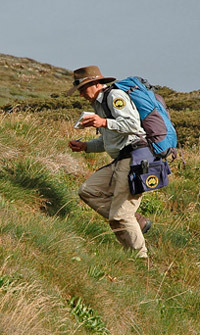Climate change
The early impacts of climate change are already evident in Australia's climate with long term changes to our rainfall and temperature patterns, reduction in water availability and the increased frequency of severe weather events and associated natural disasters.
Survival of Australia's plants and animals will depend on their ability to adapt to these altered conditions or to move to new habitats, if possible. Depending on the rate and extent of climate change and adaptive management measures, some species will become extinct and the range of others will be severely restricted.
Species at highest risk of extinction are those ecosystems already under pressure in the wild such as the montane rainforests, alpine regions, wet tropics, wetlands, heathlands and coral reefs.
Botanic gardens and herbaria play a vital role in helping to manage and protect Australia's floral biodiversity.
They can assist in a range of activities such as:
- the preservation of living collections in botanic gardens
- plant conservation in the wild
- knowledge of species' distributions and classification (taxonomy)
- recovery techniques to assist depleted populations
- research into the impacts of climate change using cultivated plants and plants or plant material (e.g. seeds) collected from the wild
- establishment of seed and gene banks
- education and community awareness.
Australia's eight capital city botanic gardens have released The National Strategy and Action Plan for the Role of Australia's Botanic Gardens in Adapting to Climate Change (2008). The national plan was endorsed by federal, state and territory environment ministers on November 8th 2008.
The national climate change strategy includes:
- a national safety net for Australian plant species through prioritisation and co-ordination of living collections, seed and gene banks
- delivery of accessible and integrated plant species information
- long term monitoring of plant responses to environmental changes
- education and community awareness campaigns for visitors to botanic gardens.
![Director of National Parks [logo]](../../images/dnp_90px.gif)






